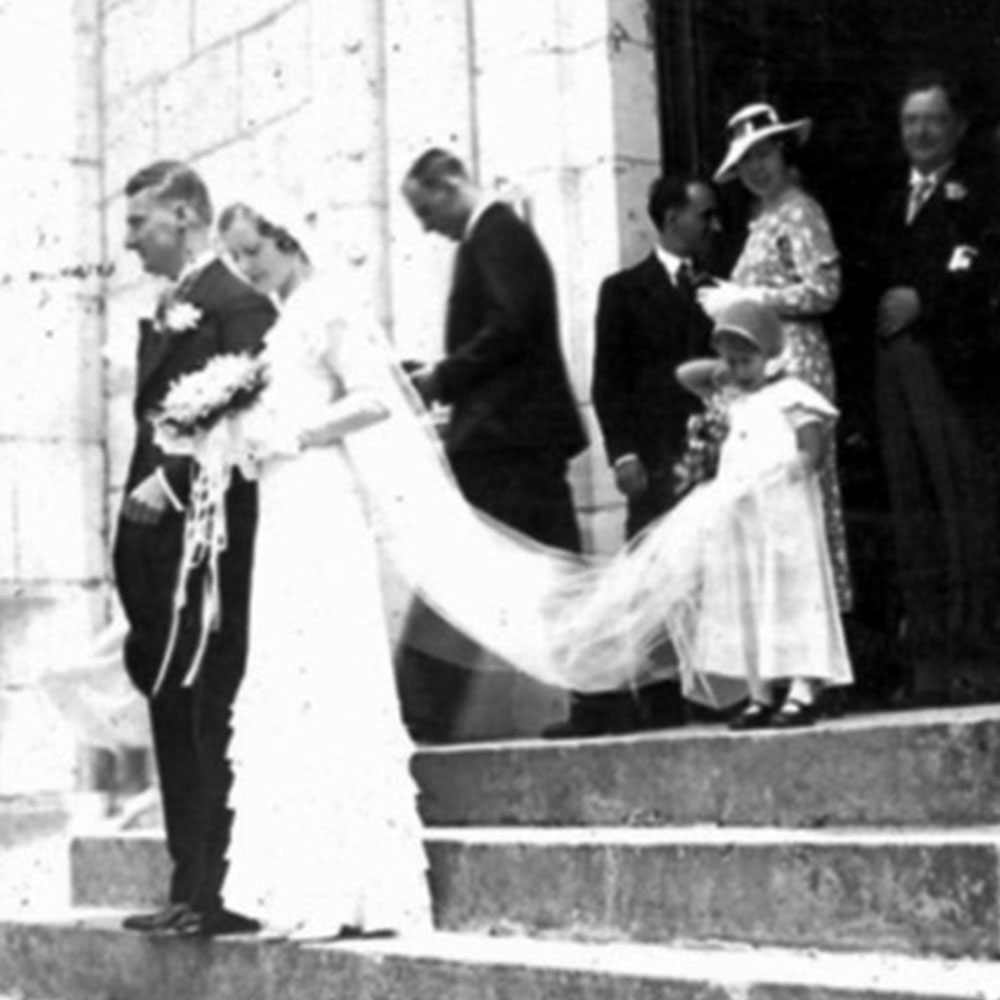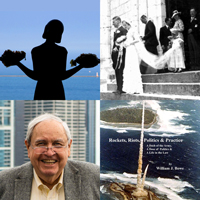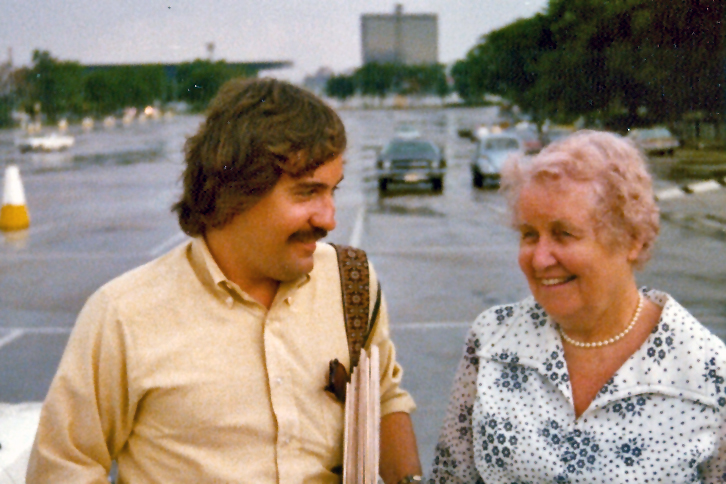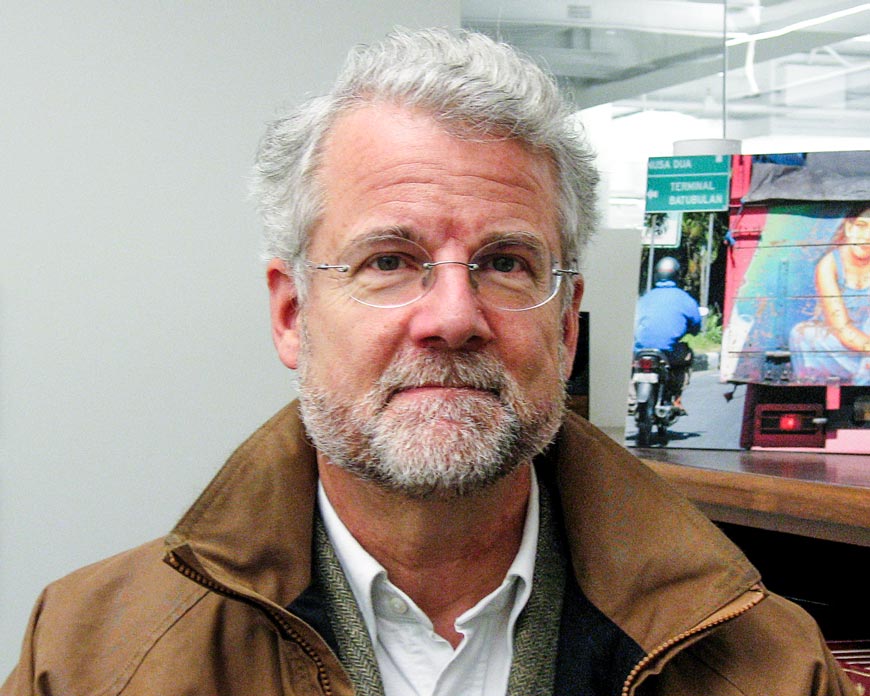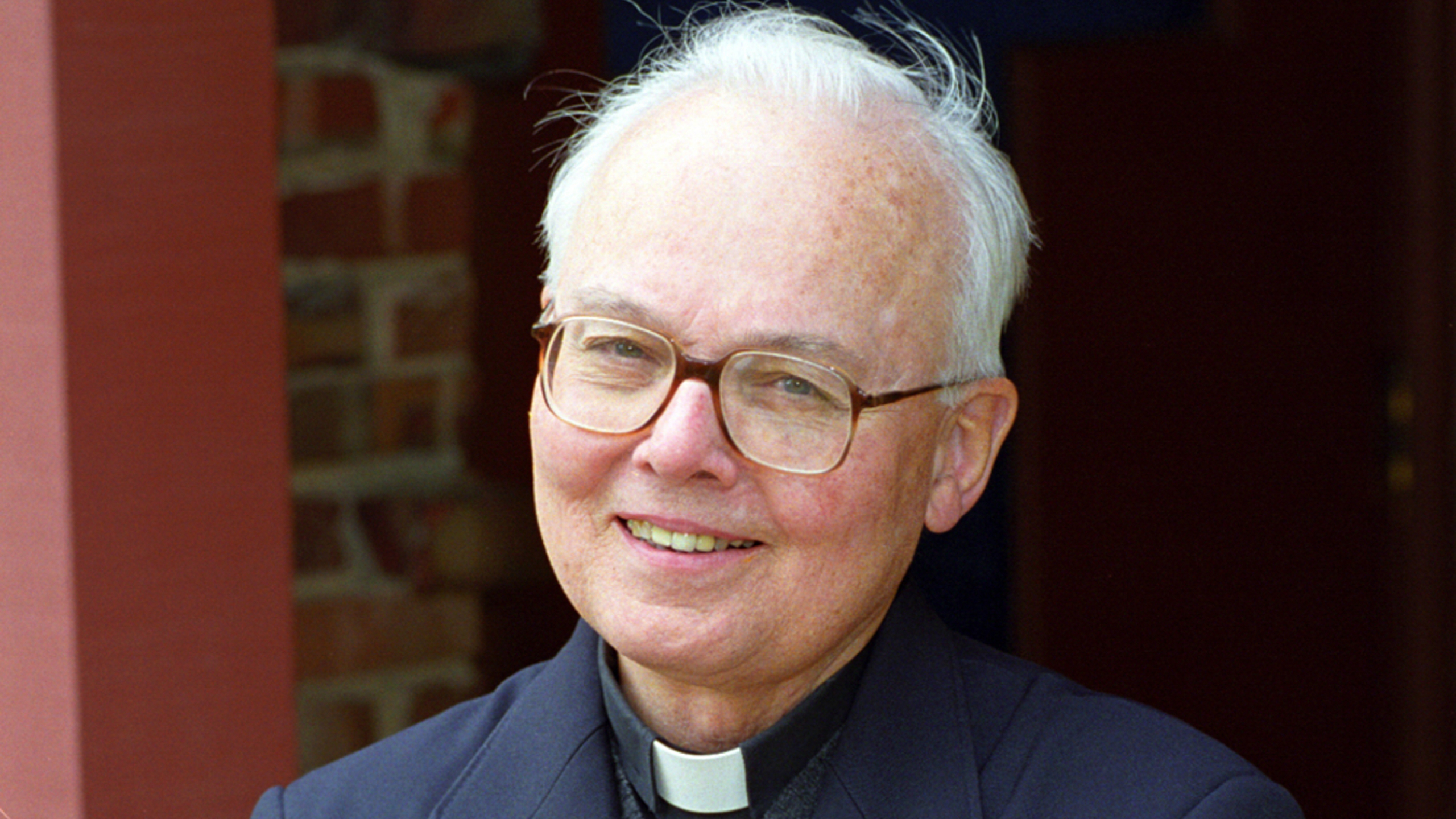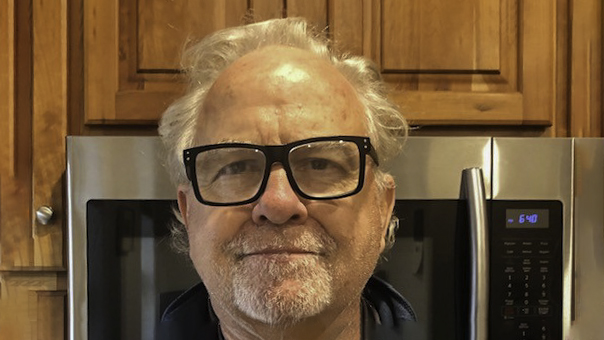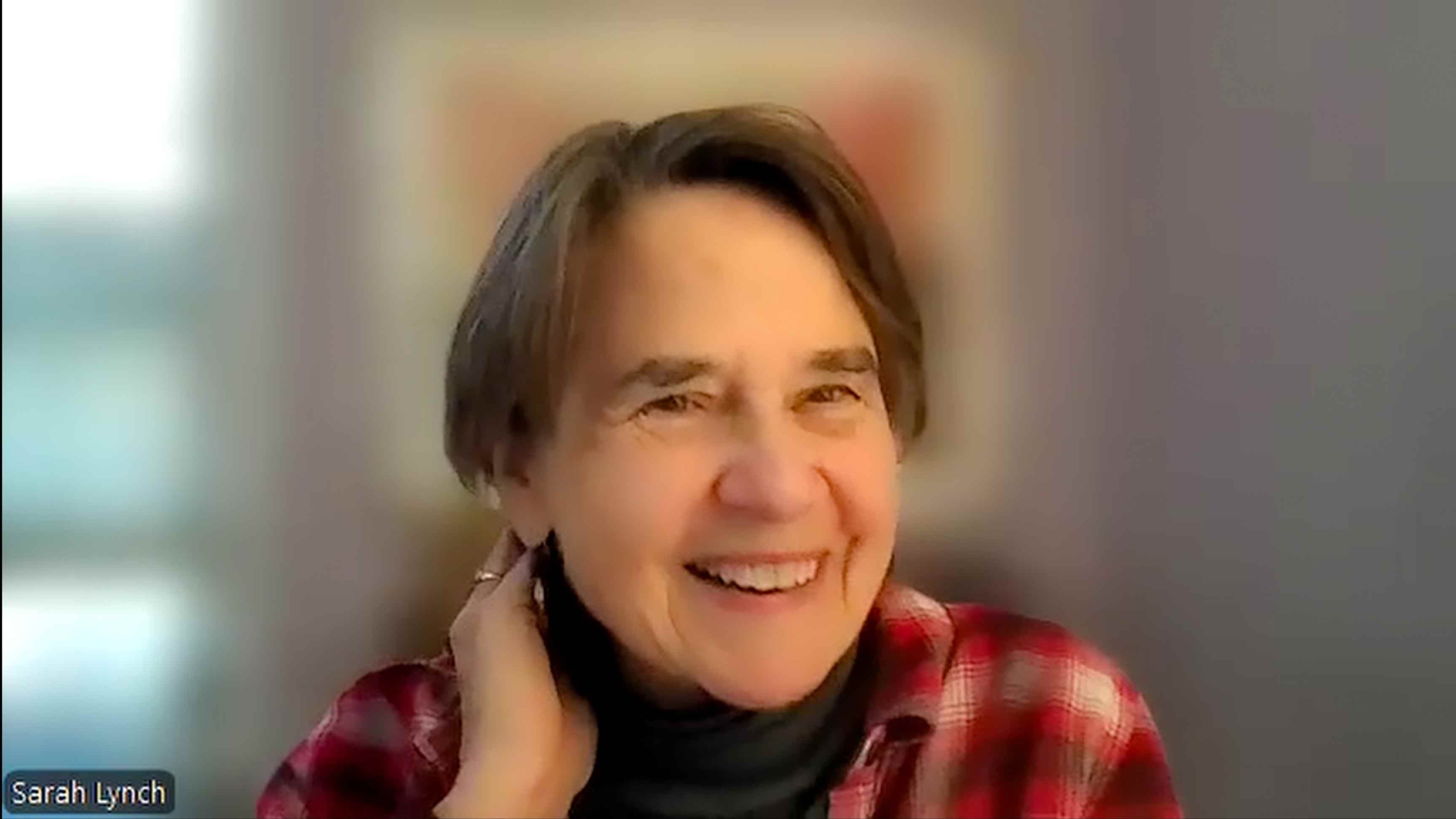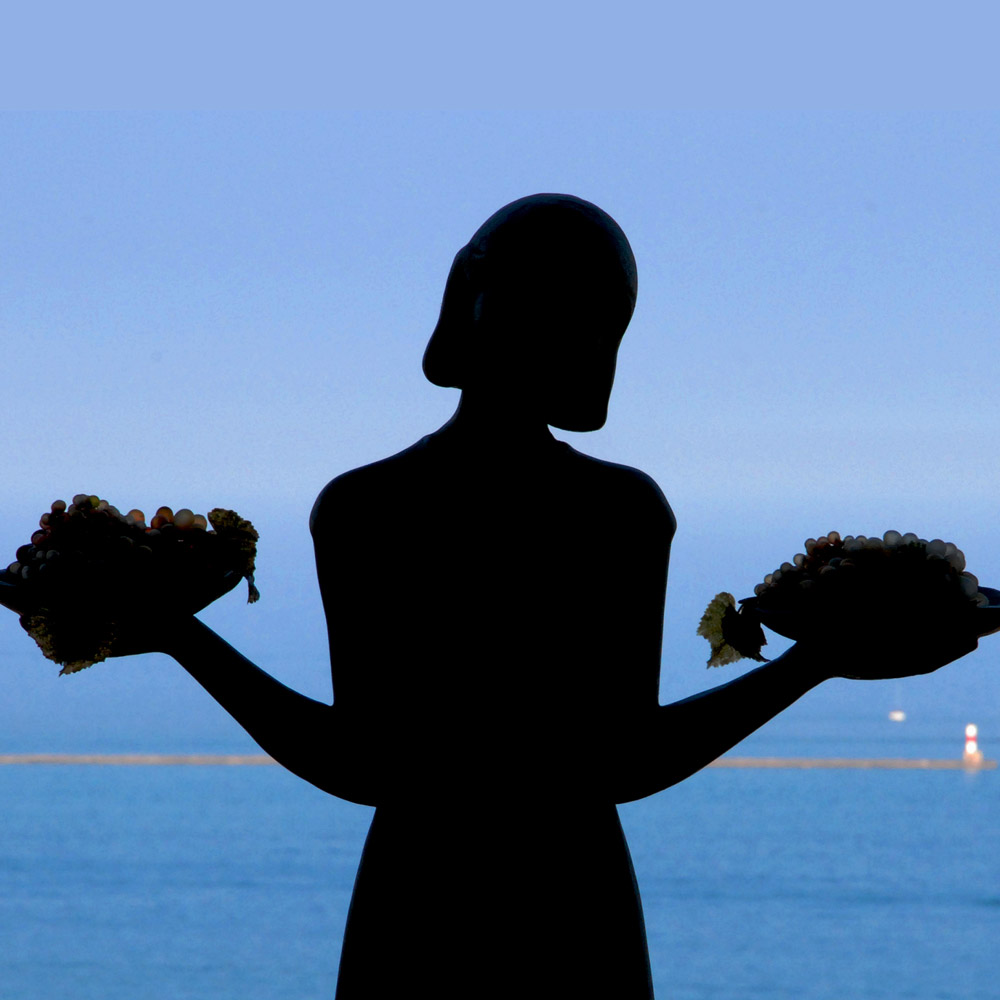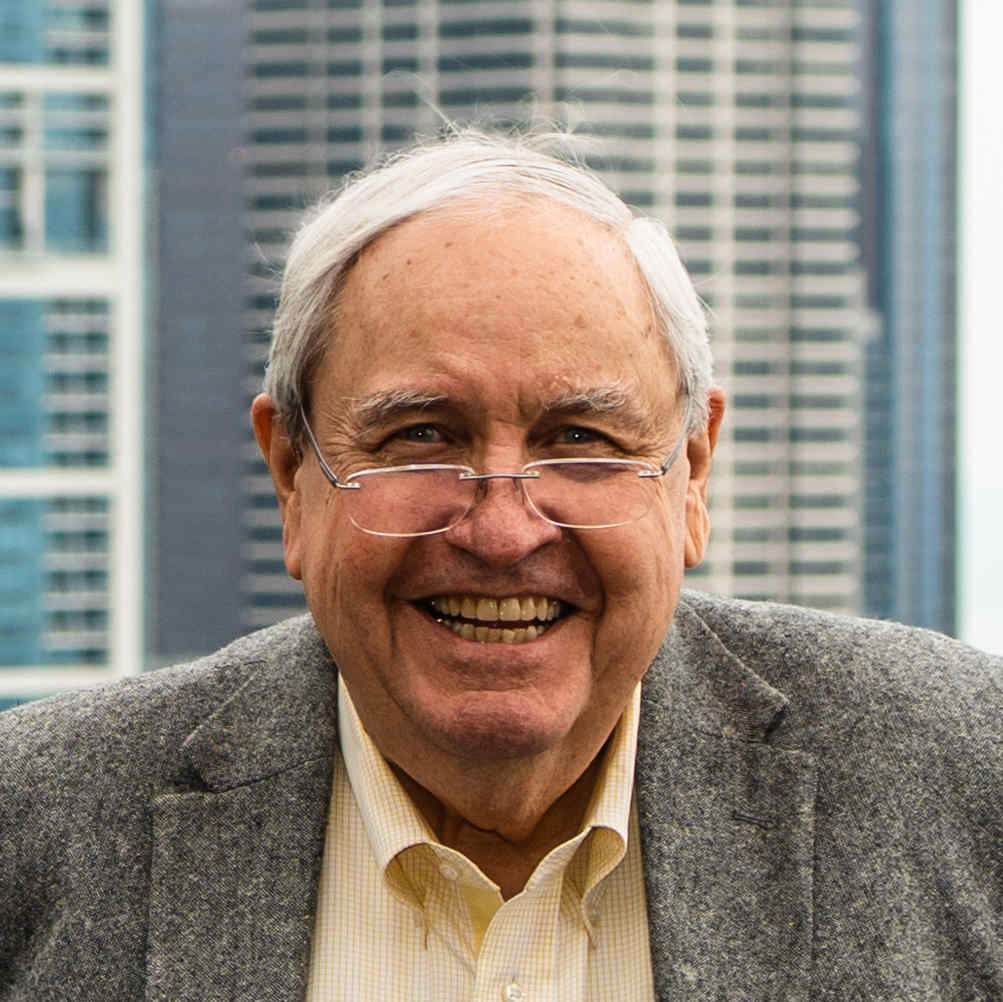Editor’s Note: In the second installment of her personal recollections written for her 1970 history and genealogy book The Families, Mary Gwinn Bowe covers her time in Chicago between her marriage to William John Bowe, Sr. in 1928 to the publication of The Families. She recalls that the absence of children in the first decade of this period gave her and Bill freedom to travel when the courts typically closed for the summer.
This ended with the birth of her first child, Richard Gwinn Bowe in 1938. With his brother William John Bowe Jr. born exactly four years and one day later, in 1942, she describes the second period of her Chicago life, switching often from the first person voice to the third. She recounts this time as one marked by child rearing amid a highly active leadership role in a great range of social justice, non-profit, school and cultural institutions. In a different way than today, “diversity” of a sort was then in vogue and the social and civic constraints previously attached to the religious affiliations of Catholics and Jews had begun to fall away. Even more active engagement in civil rights issues followed beginning in the 1950s.
With her husbands death in 1965, and her sons through college and out and about on their own, she records plunging back into her earlier life of travel. This eventually included one trip around the world in the company of Mary McDevitt, a dear friend from her college years in the early 1920s. As was true with Julia Lecour Bowe as well, they had become friends for life as members of the Trinity College, Class of 1923.
Mary Gwinn Bowe — Chicago
Looking back over fifty years certain things are very clear and some interests and activities seem to fall into a pattern of decades. In the first place, we always lived in the cooperative, 1120 Lake Shore Drive. Although we were in apartment 9A for twelve years and 2B for eight, we spent the rest of the years in 4B.
The first ten years when there were no children were spent in work, entertainment and travel.
The Bowe & Bowe Law Practice
The Bowes made a tremendous contribution to the law, to safety in industry and to better conditions for the working man of Chicago. Bowe & Bowe always represented the plaintiff and were authorities in the fields of personal injury, workmen’s compensation and negligence. Through their efforts many Illinois laws were strengthened against dangerous industrial conditions, uninsured automobiles and similar preventable hazards.
A few new diseases cropped up: silicosis, asbestosis, and other factory related forms of pneumoconiosis. The work of their wives consisted of volunteering in a useful but endless succession of exciting and worthwhile organizations. Bill and Mary went to Europe almost every summer, dividing with Julia and Gus the four month vacation when the courts were closed .
Pets
Members of the household in the first decade were Omar I and Omar II, beautiful supercilious red Persian cats who were at home in every chair and left fine, long yellow hair for all the gentlemen’s black suits.
When Dick was born the cat went . Then Dorothea Sullivan said, “You can‘t raise a boy without a dog.” So one of her black Scottish terriers moved in, Dougal the First. The puppy joined the baby carriage on all trips around the neighborhood. All were exceedingly well-behaved in public - a short leash helped. Tropical goldfish, turtles and birds followed, all of which gave great pleasure before they succumbed. A sad moment was when Rudolf Serkin was playing the Baldwin in 4B. Omar pushed the goldfish bowl over into the open piano. It’s not easy to get distraught fish out from under the strings. The canaries used to love to fly about landing as they do on whoever wears glasses. One day an ailing bird was found walking slowly across the living room, nudged gently along by Dougal, the dog. When Dougal I was very sick, it was a sad trio indeed who wheeled him over to the vet’s in the baby carriage.
When the boys were bigger it fell to the lot of Bill, Sr. and me to walk Dougal II. If we went out to walk twice a day and enjoyed the exercise and fresh air, also the bitter winds and the snow, it was the Scottie we had to thank.
Although Gus liked animals well enough, he was not as fond of them as we were, and yet he wrote:
Did your dog have four feet,
Four muddy feet and rain-wet mane, short legs, clumsily fleet,
Ears that glistened in the rain?
Did he look at me as though his look could make a friend of foe?
Did his muzzle nudge my knee pleading never to be free?
Volunteer Work as an Answer to Limited Roles for Women
The National Conference of Christians and Jews
After the anti-Catholic disturbances preceding the 1928 election of Herbert Hoover, when Governor of New York Alfred E. Smith was thought to be in danger of being elected to the presidency, the National Conference of Christians and Jews was formed to combat the Ku Klux Klan and the general hatred of Jews and Catholics and to try to establish a movement for greater brotherhood. Newton D. Baker, Charles Evans Hughes, Dr. S. Parkes Cadman , Carlton J. H. Hayes and Roger William Straus were the founders. In Chicago John P. McGoorty, Charles Gates Dawes and Albert Lasker were the founding chairmen. In Gus Bowe’s living room , with Julia helping, there gathered Father Cardinal, Rabbi Mann, Jim Yard and others to carry on the work here. With meetings, benefit luncheons and services of all kinds, Julia and Mary served on the Women’s Committee for more than thirty years.
Poetry Magazine
The magazine Poetry, founded by Harriet Monroe, was about to disappear. Gus, who became President of the Modern Poetry Association, and Julia, with many good friends, some poets, some not, worked to save it, eventually putting it on its feet. With benefits, lectures, readings by poets, dinners, auctions and contributions, they supported and enjoyed the magazine.
Aid to Greece
The next demand was Aid to Greece. Mary found herself and a number of others working for this distant cause . Truman was President and later she was reminded of all this when she walked down President Truman Boulevard in Athens.
Mlle. Berte Casselle, a teacher of French and a friend of many years, not only gave lessons, but offered one day this spiritual bit:
Une Jeune fille de Dijon
Qui n’avait nulle trace de religion, Dit, ‘Je suis fichu
Avec Toute la foule bourrue Lepere, le fils et le pigeon.
[This roughly translates:
There once was a girl from Dijon
Who left Church saying, “I’m done!”
With the Father, the Son, and pigeon!] Catholic Interracial Council
Now came Robert Sargent Schriver, Jr., President of the Chicago School Board, with an invitation to join the Catholic Interracial Council and raise money for teacher scholarships, particularly for Negro high schools. This lead to a succession of annual benefits, of which Harry Belafonte’s was the first. The programs continued through the years when the policies of the Catholic Church were under pressure. There was less than perfect communication with Cardinals Stritch, Meyer and Cody since the Council did not have the official sanction of the Church. Its membership was deeply disturbed at the mounting disaffection with the rigid, long-term relationships between the clergy and laity. Paul Elward, who was also Mary Bowe’s godson, was a powerful voice in this group.
Community Fund of Chicago
The Community Fund of Chicago first drew her into its work in the 1930s, when she simply wrote personal letters to persons picked out as civic V.I.P.’s. Going from committee to committee year after year, she wound up in 1957 as Chairman of the Women’s Division . This was no dull job since at that time there were 1,400 women on the committee. This city-wide service coordinated the work of 179 different agencies of which three federations were the largest: the Jewish, the Lutheran and the Catholic. Each had a number of other agencies under it.
Welfare Council & Child Care Institutions
At the same time she served on the Welfare Council. This particular committee of 40 concerned itself only with Child Care Institutions. She was one of the few with no agency connection. There were 10 other subcommittees dealing with other services: the Aged, Medical and so on. Chicago was a most economical place. Every dollar was used to the utmost and the budgets were scrutinized and argued about in detail. It was necessary to do the most thorough study on agency reports before going to the reviewing meetings. Finally the proper funds were allotted, with allowance for logical expansion and no repetition of mistakes. She was not a part of the distribution function and handled no money.
Woman’s College Board
At the Century of Progress a number of women’s liberal arts colleges banded together, formed the Woman’s College Board and provided a place for visiting alumnae to meet, also offering in their headquarters college entrance material for inquiring students. The first colleges, twenty in number, including Trinity, were given space in the Time-Fortune Building.
The first job was to furnish the good sized lounge. Mrs. Bruce MacLeish and Mary Bowe agreed on the Dunbar Company of Indiana, which worked out a modern and suitable area for the alumnae. It was so popular and well-attended that after the second year when the Fair closed, a small office at 30 North Michigan was opened, where the services have continued ever since.
Know Your Chicago
There soon were thirty colleges and the Board began college counselling for high school girls, put out a handbook of information about the members, started a speakers bureau, had conferences on admissions, organized alumnae study groups, conducted a biennial educational forum and followed Mrs. J. Harris Ward’s suggestion for starting Know Your Chicago. The last was a series of public lectures with prominent authorities speaking followed by explanatory tours at outstanding and critical buildings and places. They were all visited with a view to learning more about the city. In 1955, Mary Bowe became president of the Woman’s Board. General committee work included laying out such tours as: Chicago as a publishing center (Scott Foresman and Rand McNally}, the steel industry ( U.S. Steel mills}, religious places of worship (Fourth Presbyterian Church, Temple Emanuel and the Quigley Chapel), the courts and the jail, and many others.
Trinity College
The years at Trinity College in Washington have been spoken of. In a way they were continued in Chicago. Mary Bowe was President of the local Chapter in 1930 and 1931, about two hundred alumnae, was a member of the Board of Trustees of the College in the 1940s, Chairman for the Class of 1923 a number of times, and head of Special Gifts for the Fiftieth Anniversary Drive in 1950. She was also Chicago Chairman of the 1968-69 New Resources Program and was a generally active alumna.
The Latin School of Chicago
Then began the Latin School period. John and Julianne Bowe had both been students there and Raymond Walters, although there only a short time, had had his first big job as editor of the Kindergarten News. Julia and Mary went to the first Latin Bridge-Tea in 1929. Although her sons had long since finished, in 1969 she still finds herself working at something or other for the school. Richard stayed at Latin through the eighth grade. He was then a very big boy, had lived in an atmosphere of war excitement, and he was happy to be going off to St. Thomas Military Academy in St. Paul where he went to high school. Bill stayed at Latin until he went off to college at Yale. Dick later went to college at Loyola in Chicago. At one point Mary Bowe was Class Mother for each class the boys were in. At the same time was President of the Parents’ Council the year the Boys’ Latin and the Girls’ Latin schools merged and became the Latin School of Chicago.
Lower North Center and the Chicago Youth Centers
All this was while Julia and Mary Bowe had been helping with what was called the Lower North Center, a settlement house serving the very deprived families just to the west in the Mother Cabrini Homes, later known as the Cabrini Green Chicago Housing Authority project. The benefits and rummage sales and programs gradually grew very extensive, serving the 2,000 units there. Finally a municipal step to combine these and similar services in one headquarters was taken, putting some half-dozen together under the title of Chicago Youth Centers.
Pro Musica Society
For a non-musical person, Mary had a number of musical interests. In 1928 they supported the Russian Trio, so called because its key person was Russian. It is now the Pro Musica Society and Martha Gwinn Casey has been working for and with it for many years.
Marlboro School of Music
In Berlin when Betty and Martha Gwinn were studying with the Arthur Schnabels, they had known Rudolf Serkin. He, Adolf Busch and Irene Serkin had visited in Chicago. Serkin wanted to establish the Marlboro Summer School of Music in Vermont, using the facilities of Marlboro College. He told Martha, Dasha (later Mrs. Rene Devries) and Mary Bowe that his trip to South America was to raise funds for it.
Anxious to help him, they presented a little later a benefit program at the Arts Club with Agatha Lewis, a soprano, and Theodore Lettvin, a pianist, raising the then magnificent sum of $600.
Chicago College Club and Woman’s Symphony Orchestra
Through the Chicago College Club, of which Mary was a member until it disappeared from 30 North Michigan, she became interested in the Woman’s Symphony Orchestra under Ebba Sundstrom and helped that as long as it was in existence. These staid and talented ladies gave up during World War II when they were playing formal concert music in the Yar Restaurant then on East Walton.
Woman’s Committee of the Orchestral Association
They all attended the Thursday night concerts during the years of Frederick Stock and after that they were just as faithful when Hans Lange and Desire Defauw took over, both of whom lived in 112o with them. Mary Bowe is still on the Woman’s Committee of the Orchestral Association.
The Lyric Opera
The Bowes were all tremendous opera lovers from the last of the performances in the old Auditorium in 1929, having followed the Chicago Grand Opera Company, the Chicago Opera Association and the Chicago Civic Opera Company, through the bleak period when there was no opera at all. Then the San Carlo came and Fortuna Galli. It had very moderate prices and good, but not expensive, voices. Finally in 1954 The Lyric Theatre, later called the Lyric Opera, surprised Chicago by coming into a strong existence. Carol Fox with Nicola Rescigno and Lawrence V. Kelly were to be thanked for this incredible effort, even though their first season was only three weeks.
In the early 1930s the Bowes attended often with the Harold Rays. He had been business manager at the old opera and continued in that position under Samuel Insull, bringing us very close to the opera, the house activities and the singers. When the Lyric Opera Women’s Board came into existence, Mary Bowe was invited to be a member and has been active on it for sixteen years, concentrating on their educational projects for the school children and the colleges. Gus had done the major legal work of establishing in arbitration the Lyric under Carol Fox.
Le Cercle Francais
As a complete non-French speaking person, Mary was an appreciative member for a number of years of Le Cercle Francais. This group of amiable ladies with varying degrees of proficiency in that language did not objectto her presence among them for lessons, lectures and tea. She enjoyed it all and at one point even presented a brief reading herself — for which short effort she prepared intensively, “Le Vase Brise! ”
Board of Trustees, WTTW Channel 11
She was invited by Mr. Edward Ryerson, the moving force for the Chicago Educational Television Association, to join their Board of Trustees in 1955, Naturally, since there were no funds and the public had to be sold on a nonexistent service, the first thing was a benefit. With Mrs. Glen Lloyd she launched this at the Racquet Club, through the Metropolitan’s Opera Andrea Chenier, and a proper $10,000 was raised for WTTW, Channel 11.
Art Institute of Chicago Emergency Fund
In between benefits she served as a juror in the Cook County Court in 1953 when John Babb was Sheriff. The same year, she and Julia Bowe helped the Art Institute Emergency Fund Drive in welcoming the families of the American Bar Association during their Chicago Convention.
Women’s Scholarship Committee, Roosevelt University
They were also a part of the transition of the old Auditorium Hotel property, scene of so many memorable evenings of opera, as it was transformed into the new Roosevelt University. Here they were part of a Women’ s Scholarship Committee, giving annual bazaars, sales and services for several years when Rudolf Ganz was helping everyone and when a little money went a long way.
American Cancer Society
In working with large groups, she found herself in the crowded decade of the 1950s with the Chicago Division of the American Cancer Society. She remembers benefits, meetings and a new emphasis on medicine and a very big fund drive.
War Bonds
During World War II she and her husband and an 1120 neighbor Col. George Langhorne helped in the sale of War Bonds both at 1120 and in the Near North neighborhood.
Passavant and Wesley Memorial Hospitals
When she was able to have the services of one Miss Cederberg to spend the day with the boys, she offered her services to Passavant (later Northwestern) Hospital, where the children were born. All hospitals were short of help during the War. Having had some office experience, she was shown at once to the Records Room where they were far behind. She stayed one year until they went into mechanical reports and filing. Next, she and Julia became Gray Ladies and for the rest of the War directed and worked in the library of Passavant Hospital. Then they were able to have a full time librarian, so Mary Bowe continued library work for the Navy at the Wesley Memorial Hospital (now also Northwestern Hospital).
Chicago Information Service of the League of Women Voters
Mary also was a director of the Chicago Information Service from 1954 to 1970. It was a branch of the League of Women Voters.
Later Travels
While Bill was at Yale, his parents visited him in New Haven a number of times, seeing him off to Europe in 1963 and going him and Peter and Chesley Riboud de la Chapelle to his graduation and to the New York World’s Fair in 1964.
Bill and Mary Bowe had their final trip to Europe in 1962, flying back and forth with the Chicago Bar Association group, visiting the Ribouds in Paris and flying to Madrid. Without hurrying, they especially enjoyed the travels in northern Spain.
Having taken so many splendid trips with her husband in Europe and the United States, after Bill Bowe’s death Mary continued her travels , going to the Middle East, to Sonth and Central America, and in 1968, with Mary McDevitt , around the world.

